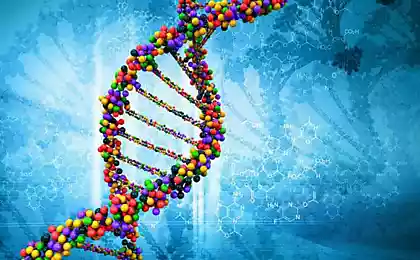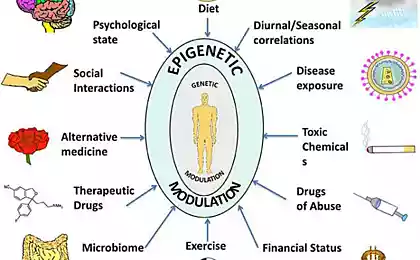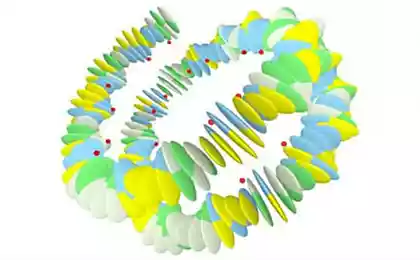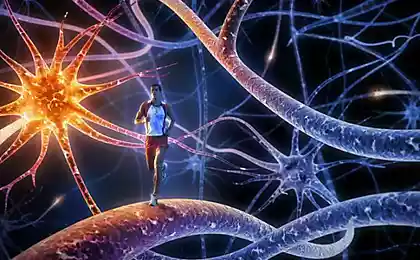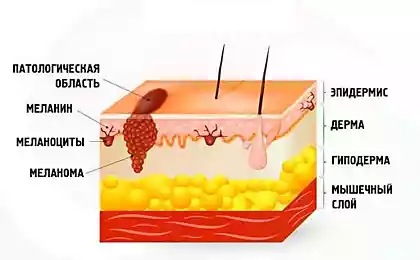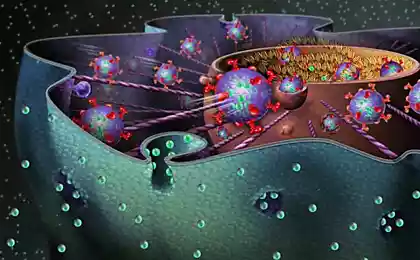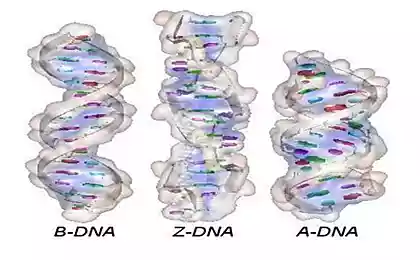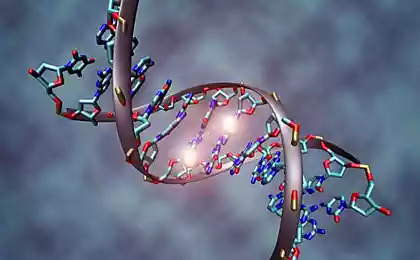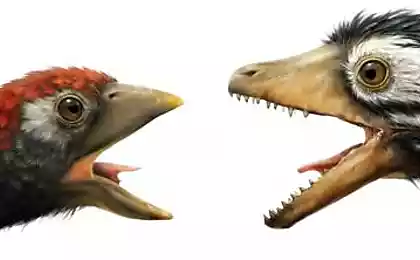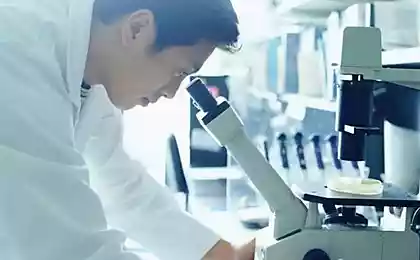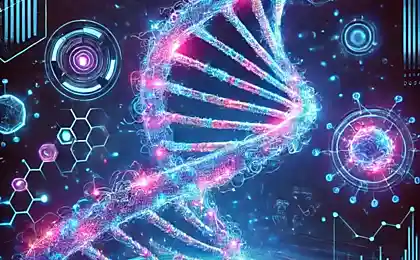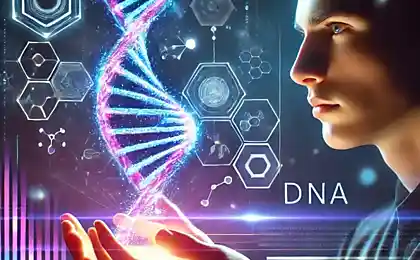307
Interesting facts from the world of genetics. Read to men and women!
Description: This article is about incredible facts from the field of genetics – the science that studies heredity and changes in genes. With the help of clear explanations and scientific examples, the reader will learn about the role of DNA in the formation of appearance, character and possible diseases. The material will be interesting for men and women who want to understand how genes affect our lives and evolution.

Introduction
Gene science, genetics, has ceased to be the lot of a narrow circle of researchers. Current discoveries in this field directly affect how we treat diseases, understand evolution, and even choose partners. The word "genetics" comes from the Greek "genesis", which means "origin". The name itself already contains the key to understanding the essence of the discipline: genetics studies the patterns of heredity and variability. In different corners of the earth, women and men carry genes that have been shaped by thousands of years of evolution and that determine the characteristics of offspring. But how exactly do these invisible elements in our cells work, and how complex is the code governing all forms of life?
In this article, we will look at some interesting facts from the world of genetics that can surprise and inspire. Here you will find information about how DNA determines our appearance, why genes are predisposed to certain diseases and how humanity uses genetic technologies to improve the future. And we will also answer the question of why genetic heritage does not always predetermine our fate, and what is the influence of the environment on the realization of certain genes.
Although at first glance this topic may seem “scientific and complex”, believe me: the facts about the structure of DNA, the ways of gene regulation and unusual genetic examples from nature will be not only accessible, but also fascinating. After all, each of our cells is a universe of micromachines working according to a clear plan written on a molecule that spans millions of years of evolution.
Main part
1. DNA Length and Our Packaging
If you spread all the DNA in one human cell, it will be about two meters long. Each cell is incredibly small: you can put pins on your head hundreds of thousands of cells, or even more. So how do we pack two meters of genetic material into a microscopic cell? This process is provided by a specific “packaging” mechanism. DNA is wound onto histones (special proteins), then folded even more compactly and forms chromosomes. This “correct folding” not only saves space, but also drives gene activity, allowing the cell to turn on or off specific stretches of DNA.
Interestingly, when a cell divides, the level of DNA packaging becomes even denser to avoid errors during chromosome separation. So nature came up with an elegant scheme: we have 46 chromosomes (23 pairs) that store the entire “assembly instructions” of the body.
2. Roles of modifiers and epigenetics
It is often thought that if a parent has blue eyes, the child will have blue eyes. But it's not that simple. Genetics includes the concept of a modifier gene that changes the degree of manifestation of another gene. That is, one “main” gene can say “you will have blue eyes”, and a set of “modifiers” can correct the shade, brightness and even the pattern of the iris.
Epigenetics goes even further. It is the study of how external factors affect gene activity without altering the DNA sequence itself. Imagine that you have genes that are responsible for a certain trait, but whether or not they turn on depends on the conditions (nutrition, stress, toxins, lifestyle). Scientists have found that such labels can be passed on to offspring, meaning lifestyle can affect not only you but also your children.
3. “Male” and “female” chromosomes: the key to sex
Many people have heard of the X and Y chromosomes. Men have XY, women have XX. But the genetics of sex is not always so primitive: there are rare syndromes (for example, Klinefelter syndrome, XXY, or Shershevsky syndrome - XY with "turning off" Y), when the body is formed with gender characteristics that differ from the "classic" variant. These anomalies remind us that heredity is a complex game of combinations, and no trait is reduced to simple formulas.
The Y chromosome is one of the smallest and carries a limited number of genes. However, one key precinct (SRY) is launching a "male program" of development. However, men have only one copy of the X chromosome, whereas women have two, so some “X-related” diseases (for example, hemophilia) occur more often in men, due to the lack of a “second instance”. X for compensation.

4. Genes and Behavior: What Does Science Say?
Heated debate revolves around the question: Is human behavior determined by genes or upbringing? The truth is in the middle. There are genes responsible for the predisposition to certain mental disorders (for example, depression or addiction). But their manifestation often depends on the environment, stress, upbringing. That is, the presence of a “risky” gene does not sentence, but only indicates that under certain circumstances the risk is higher.
Studies of identical twins show that although they share the same genetic code, they can differ significantly in character and habits. It is the influence of environment, social environment and personal experience. So when it comes to character, genes are one side of the coin, and the other is our unique way of life.
5. Mutations: Not always bad!
The word “mutation” often causes a negative: it is associated with abnormalities and diseases. But from an evolutionary perspective, mutation - the engine of progress. The vast majority of mutations are either neutral or harmful. However, in rare cases, they give a "plus" look that is fixed in generations. For example, some populations of people have mutations that allow them to tolerate highlands without harm to health or absorb lactose in adulthood (lactose tolerance). This is the result of natural selection.
In medicine, the study of mutations provides an understanding of genetic diseases and the ability to develop gene therapies that allow you to correct the broken sections of DNA. This is one of the most promising areas in modern biology.
6. Myths about the “talent gene” and “racial genetics”
In popular culture, people like to talk about the “genius of genius” or the “race of athletes.” But science claims that most complex traits (intellect, athletic ability, musical talent) are polygenic traits formed by the interaction of many genes and environments. There is no single Mozart gene or Michael Jordan gene. Success is the result of genetic background, training and cultural background.
Same thing with racial stereotypes. Genetic studies confirm that there may be more variation in genes within each race than between races. This means that racial division is genetically simplified and lacks rigorous scientific justification.

7. Genetic Engineering: Future or Reality?
CRISPR/Cas9 and other genome editing technologies are ushering in a new era in medicine. Scientists have already learned to “cut” and “insert” genes, correcting hereditary diseases. Although there is a heated debate about ethical aspects, it is also possible to influence the physical or intellectual characteristics of unborn children. On "before you fix nature" makes you think about the long-term consequences. However, no one denies that this is a huge breakthrough in the treatment of severe genetic diseases.
Even agriculture uses genetic technology to create plants that are resistant to pests or drought. The issue of genetically modified organisms (GMOs) remains a hot topic. But the reality is that genetics is already shaping the future, and humanity must learn to use it wisely.
8. Misconceptions about the “gene passport” and fate
Do not think that, having passed the analysis and received a “genetic passport”, we will get an accurate scenario of life. The genome indicates probability, but is not the final sentence. A person may have an increased risk of cardiovascular disease or diabetes, but if they lead a healthy lifestyle, this risk is reduced. The same applies to mental disorders and some forms of cancer. Hence the important conclusion: genes are not dogma, but a “factor” to be reckoned with, but the decision is up to us.
9. Interesting examples from nature
- Jellyfish glow. Studying the genes responsible for jellyfish bioluminescence has helped develop a “green fluorescent protein” (GFP), a revolutionary tool for imaging cellular processes.
- The sleepless survival gene. Some people have found a rare gene that allows you to get just 4-5 hours of sleep without harm to health. This mutation is extremely rare, but, alas, does not make a person a “superman” in everything else.
- The disease and the "useful" gene. There are cases when the carrier of the gene to some rare disease at the same time receives protection from other diseases. A classic example: sickle cell anemia and protection against malaria.
Such examples confirm how flexibly evolution "tuned" living organisms to environmental conditions, and genetics only deciphers these hidden mechanisms.
Conclusion
Genetics is one of the most exciting sciences of our time. From hereditary diseases to personality traits, from evolutionary biology to personalized medicine, it’s all about studying genes. For men and women, understanding their genetic characteristics can help make informed decisions about health, family planning and lifestyle. And when we look at the tremendous advances in gene editing, we hope that many seemingly “incurable” problems can be solved with future discoveries.
At the same time, it is important to remember that heredity leaves an imprint, but does not determine fate entirely. We shape most of our lives by interacting with our environment, eating, working, loving and dreaming. Genetic maps provide only a scheme, and how we “color” it, we decide. That is why genetics is not a dark prediction, but an amazing tool for understanding ourselves and nature. The better we understand it, the more consciously we build our future.
Glossary
- DNA (deoxyribonucleic acid)A strand that stores genetic information in all living organisms and some viruses.
- epigenetics: studies inherited changes in gene expression that do not affect the sequence of DNA nucleotides.
- chromosomeThe structure in the cell, consisting of DNA and proteins, carries genes. Humans have 46 chromosomes.
- histonesProteins around which a DNA strand is “wound” for compacted packaging in the cell nucleus.
- SRY-geneA gene on the Y chromosome responsible for male formation in embryogenesis.
- CRISPR/Cas9Genome editing technology that allows you to “cut” and “paste” sections of DNA.
- Locus.A specific place on a chromosome where a gene or other inherited element is located.
- Mutation.Any change in DNA sequence leading to new gene variants and possibly new traits of the organism.
Advice from a 90-year-old woman. Read it at least once a week!
6 features that make you seem unattractive
